The Top Backpacking Chairs, Evaluated and Rated

Most Cozy
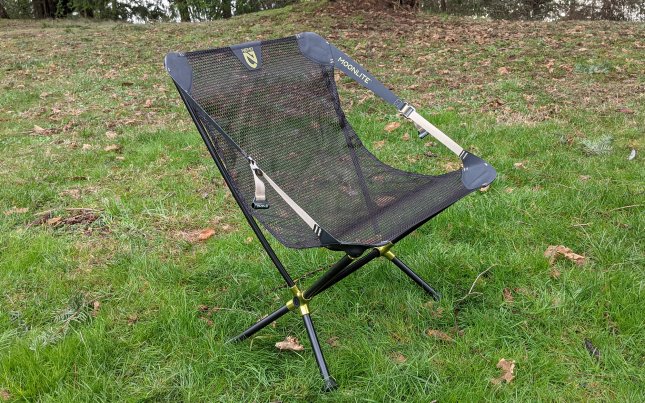
NEMO Moonlite
Best for Larger Individuals
The Helinox Chair One XL offers a lightweight, portable seating solution designed for outdoor enthusiasts. Its durable construction and compact design make it ideal for camping, hiking, or any adventure. The chair is easy to assemble and provides reliable comfort in various settings. With its high-quality materials and sturdy frame, the Helinox Chair One XL ensures stability on uneven terrain while remaining simple to transport.
Top Quality at the Best Price
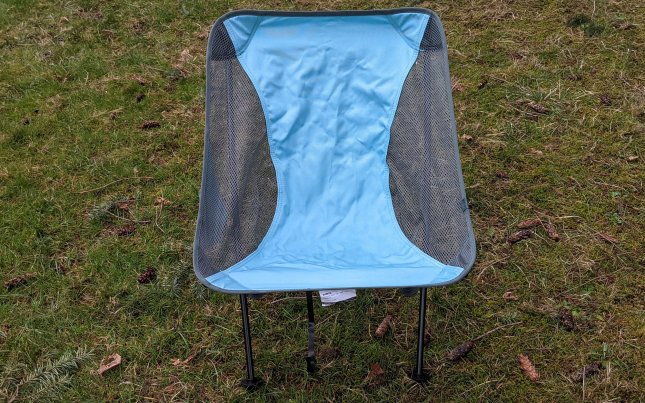
The Klymit Ridgeline Short offers a streamlined design for enhanced mobility and comfort during outdoor activities. Its compact build ensures ease of movement while maintaining the durability and functionality expected from Klymit products. Ideal for hikers and adventurers, this short version provides the same reliable performance as the original Ridgeline, tailored for those who prefer a shorter fit.
We might generate income through the items listed on this site and take part in affiliate initiatives. Discover More ›
Few pieces of gear symbolize “luxury” as clearly as the backpacking chair. Bringing one along suggests you’ve also packed a flask of whiskey and intend to celebrate your journey with a drink against a breathtaking view or beside a crackling campfire—perhaps even both. To assist in selecting the ideal backpacking chair for ultimate relaxation, I tested several top-rated models side by side in real-world conditions.
- Most Comfortable:
- Best for Larger Individuals:
- Top Choice for Value:
- Top Performance in Stability:
- Top Pick for Lightweight Performance:
- Top Affordable Choice:

Evaluating the Top Backpacking Chairs for Performance
The backpacking chairs in this assessment were tested on firm terrain, sandy shores, and wet grassy areas. I examined comfort, how simple they were to assemble and pack, and their steadiness across all conditions.

Several chairs were also tested during a group winter backpacking excursion to evaluate their performance in real-world conditions. To determine the most suitable options for bigger users, I examined each chair’s weight capacity and functional width, then had a 6-foot-3 tester repeatedly sit and rise in the top contenders to gather their impressions.
Top Backpacking Chairs: Expert Reviews and Picks
Most Comfortable:
Most Comfortable
NEMO Moonlite
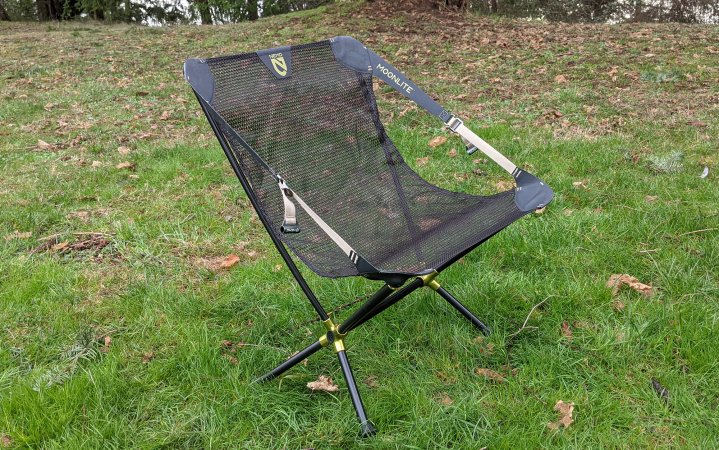
Pros
- Backpacking chairs with open sides provide greater hip freedom compared to conventional designs.
- Customizable back support
- Exceptionally high weight capacity relative to its compact dimensions
Cons
- The Tips model moved forward more effortlessly compared to the others during my testing.
- Expensive
Key Characteristics
-
Weight:
1 pound and 14 ounces -
Maximum Weight Allowed:
300 lbs -
Seat Height:
10.5 inches -
Materials:
Aluminum and polyester
The NEMO Moonlite is the backpacking chair I’m most inclined to take on trips, as it strikes the ideal balance between comfort and weight compared to other models I’ve tried. Unlike many of the top backpacking chairs, which feature fully fabric seats, the NEMO Moonlite has open sides. This design reduces pressure on the hips for a more comfortable experience.

The contrast became particularly striking after spending a full day hiking. I was testing a new backpack, and as often occurs, my hip bones were slightly sore. Unlike other backpacking chairs that quickly grew constricting around my hips and became unpleasant within minutes, the NEMO Moonlite provided such comfort that I stayed seated in it for more than an hour without issue. The side straps, which could be easily adjusted, were another highlight—they let me shift the chair into a more upright posture while cooking with my top-rated camping cookware, then switch back to a relaxed recline when it was time to unwind. Additionally, this was the sole chair under 2 pounds in my trial that supported up to 300 pounds.
The primary drawback of this chair is its reduced stability compared to other models I evaluated, especially its tendency to tilt forward. The back feet feature a flat angle that can be modified for different surfaces, while the front feet are rounded, and the legs are slightly shorter. Though this wasn’t overly apparent while seated, I had to be somewhat careful when getting up.
Best for Larger Individuals:
Best for Larger Individuals
Helinox Chair One XL
Pros
- Exceptionally steady
- Spacious seating designed for minimal restriction
- Maximum weight capacity of the backpacking chairs evaluated in my assessment
Cons
- Heavy
Distinctive Attributes
-
Weight:
3 pounds and 6 ounces -
Maximum Weight Capacity:
320 lbs -
Seat Height:
18.5 inches -
Materials:
Aluminum and polyester
If you’re taller than average, most of the top backpacking chairs seem laughably small. Even for someone like me, standing at just 5 feet 5 inches, many feel cramped. The Helinox Chair One XL, however, is a game-changer. When I asked my 6-foot-3 husband to test both this and the Big Agnes Mica Basin XL, he didn’t hesitate—the Helinox was clearly the more comfortable option, whether for getting in and out or lounging for extended stretches. In fact, the Helinox Chair One XL is so spacious and cozy that I’d gladly make it my go-to chair for car camping trips.
Beyond its elevated seat height and the top weight capacity in my evaluation, the Helinox Chair One XL stood out as one of the sturdiest chairs I assessed, performing well across various surfaces such as sand, mud, and solid terrain. It also tipped forward the least compared to other models, reducing the effort required by your core muscles when standing up.
The clear drawback of this backpacking chair is its weight, exceeding three times that of the top lightweight option. However, larger individuals understand that sacrificing some portability for gear that properly accommodates their size is a worthwhile compromise.
Top Choice for Value:
Top-Quality at the Best Price
The Klymit Ridgeline Short
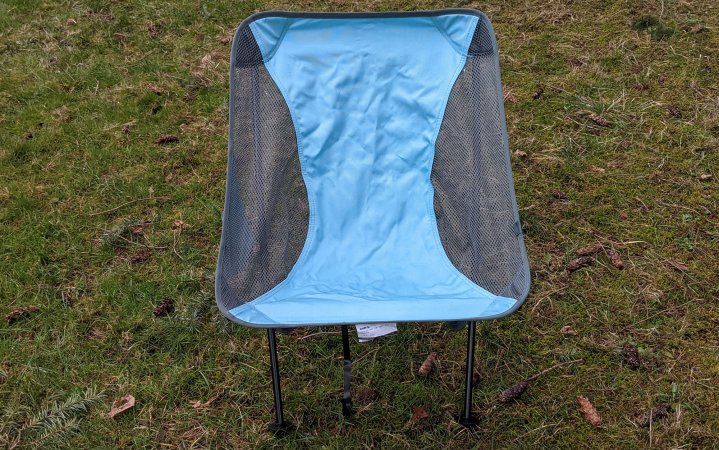
Pros
- Among the most affordable backpacking chairs in my evaluation
- Remarkably steady
- Features a convenient right-hand pocket designed to hold your phone.
Cons
- A bit challenging to put together
- Unsteady legs
Distinctive Attributes
-
Weight:
30 oz -
Maximum Weight Allowed:
265 lbs -
Seat Height:
13.5 inches -
Materials:
Aluminum and polyester
If you’re interested in a lightweight backpacking chair but hesitant about the cost, the Klymit Ridgeline Short is an ideal choice. During evaluations, testers praised its comfort on the group excursion, and in stability tests, it performed excellently on mud, sand, and solid terrain—matching chairs that cost significantly more.
The Klymit Ridgeline Short has a notable drawback: it was the hardest to set up straight out of the box. We needed several people to pull the fabric body over the aluminum frame. At one stage, it felt like the frame might snap just from fitting the polyester cover. Luckily, that didn’t happen, and putting the chair together afterward became much simpler. Still, it’s evident that the Klymit Ridgeline Short’s fabric stretches more than other models I tested, which could be problematic if you’re close to the chair’s 265-pound maximum weight capacity.
During the stability assessment, I observed that the chair’s lower legs had a slight wobble. Although this isn’t apparent when seated, as body weight stabilizes the legs, it could indicate potential durability concerns over time.
Most Reliable Performance:
Optimal Stability
Big Agnes Skyline UL
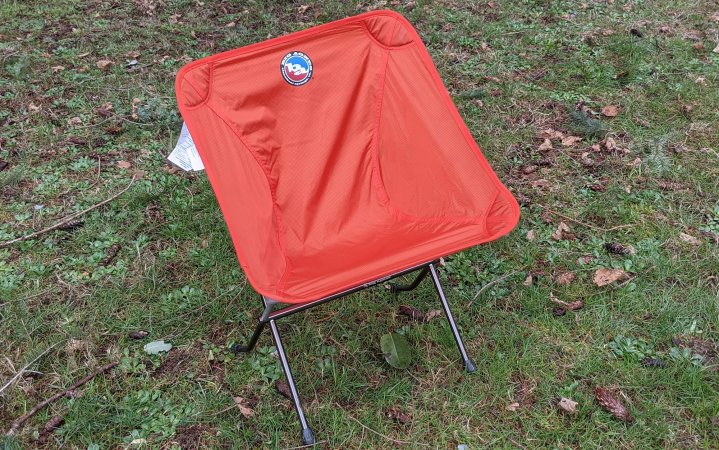
Pros
- Exceptionally steady given its dimensions
- Relatively lightweight
Cons
- Expensive
Essential Characteristics
-
Weight:
1 pound and 12 ounces -
Maximum Weight Allowed:
275 lbs -
Seat Height:
15 inches -
Materials:
Aluminum, nylon
The Big Agnes Skyline UL stood out as the favorite backpacking chair among my young tester, primarily because of one standout trait: its exceptional resistance to tipping. Unlike other models that often leaned too far forward or backward when shifting positions, the Skyline UL remained impressively steady. In tests, its stability rivaled that of chairs much heavier. A closer look at its design reveals the reasons behind this. For starters, the legs span a wider square footprint compared to similar-sized options. Additionally, the back legs curve slightly inward, virtually eliminating any chance of tipping backward.

The Big Agnes Skyline UL offers good stability, but its seat is more narrow compared to similar-sized models, which could be less comfortable for backpackers who have broader hips, even though it supports up to 275 pounds.
Top Pick for Lightweight Performance:
Best Lightweight
REI Flexlite Air Chair
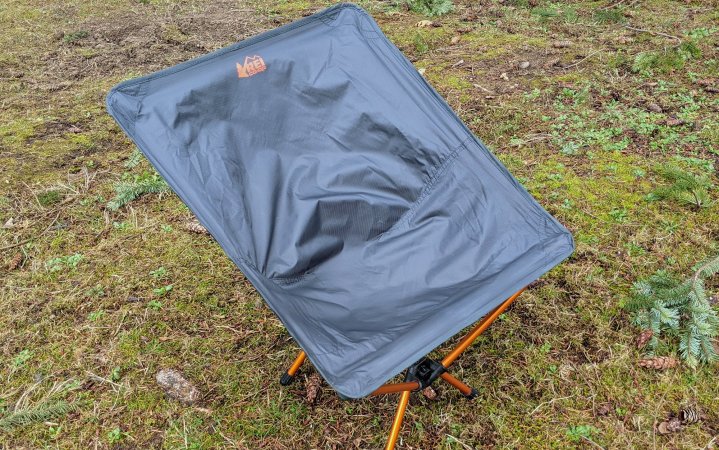
Pros
- Extremely light in weight
- Affordable
- Simple to put together
Cons
- The least stable chair I examined
- Tight-fitting seat
Distinctive Characteristics
-
Weight:
1 lb -
Maximum Weight Allowed:
250 lbs -
Seat Height:
11 inches -
Materials:
Aluminum, nylon
I understand your concern: “But what’s thelightest“Backpacking chair?” Let me convince you otherwise. The reality is that the lightest backpacking chair is the one you don’t bring. It’s the fallen log near your campsite, a soft bed of pine needles, or a surprisingly level stone. If the weight of a backpacking chair concerns you, simply go without it.
Pushing the weight limit too far compromises a backpacking chair’s performance. The REI Flexlite Air exemplifies these drawbacks. Weighing just 16 ounces, it’s the lightest backpacking chair on the market—lighter than the popular . However, it proved the least stable in testing, often tipping sideways even on solid ground. Unlike most backpacking chairs with a widthwise support bar, the REI Flexlite Air’s runs from front to back. Along with its shorter-than-average legs, this design makes it more likely to tilt sideways with minimal force.

Upon closer comparison, I noticed the REI Flexlite Air’s seat was notably tighter than other backpacking chairs, pressing against my hips more than I found comfortable following a full day of hiking. The fabric’s loose tension, resembling a pouch rather than a proper seat, also made getting up more challenging.
The REI Flexlite Air maintains its durability without compromise. After more than four years of use, this chair performs just as effectively as it did on the day I bought it.
Top Affordable Choice:
Affordable Choice
Crazy Creek Hex 2.0
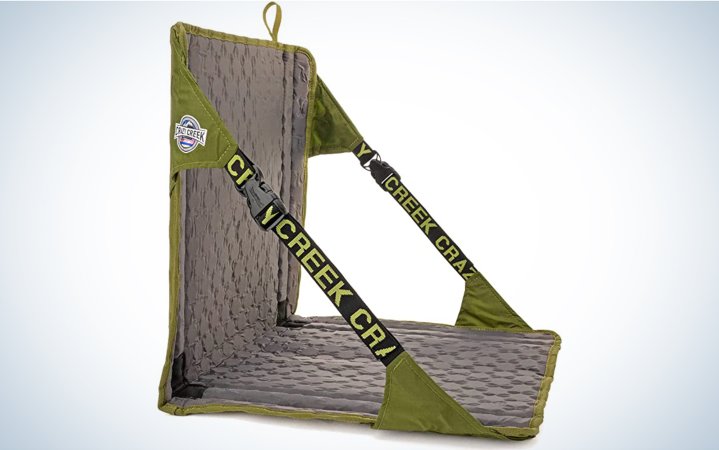
Pros
- Lightweight
- Inexpensive
- Simple to operate
Cons
- Not exactly a chair in the traditional sense
- Increased dimensions when packed
Distinctive Attributes
-
Weight:
1 pound, 4.8 ounces -
Maximum Allowable Weight:
250 lbs -
Seat Height:
0 inches -
Materials:
Nylon, foam, carbon fiber
If the reviews have convinced you that a backpacking chair isn’t worth the hassle, consider the Crazy Creek Hex 2.0 as an alternative. Slightly heavier than the REI Flexlite Air, this rollable seat offers far greater comfort and stability. It achieves this by eliminating legs altogether, resting directly on the ground. Nylon straps on the sides let you adjust the seat’s angle, whether you need support for eating or want to recline and relax.

Naturally, the drawback of such a seat is that you’re positioned close to the ground, meaning any mud or dirt will easily stick to the seat (and potentially your legs). Additionally, entering and exiting requires more effort (though rocking back and forth can help generate the momentum needed to stand up).
Selecting the Ideal Backpacking Chair for Your Needs
Weight
A backpacking chair is often seen as a luxury, making it an item that weight-conscious backpackers might choose to skip. But if your daily hikes are under 10 miles, bringing one can greatly enhance your comfort at camp. Although many lightweight and ultralight backpacking chairs are available, they usually don’t provide the same level of comfort as heavier models, which typically weigh around two pounds. Before deciding, weigh your options carefully—prioritizing either pack weight or comfort.
Design
Most backpacking chairs share a common structural approach. The primary frame operates much like a tent pole, featuring metal rods linked by an elastic cord that clicks into place. Typically, these chairs include a central stabilizing pole where eight additional poles intersect in a crosshatch formation: four for ground support and four to hold the fabric seat. The seat material is then secured over the upper four poles. Although the designs are alike, testing revealed that minor adjustments—such as the angle of the main pole or a subtle curve in the rear legs—significantly impacted each chair’s steadiness.
Price
Backpacking chairs can vary significantly in cost, with prices ranging from $60 to $200.
Comfort
Testing revealed that larger chairs generally provided greater comfort compared to smaller ones, though significant variability existed across designs. Additional factors such as seat shape, cut-outs, and adjustable straps should also be taken into account during evaluation.
FAQs
Backpackers regularly hiking more than 20 miles daily are unlikely to justify carrying a backpacking chair due to its added weight. The comfort it offers at day’s end won’t compensate for the extra one to three pounds in their pack. On the other hand, backpackers or bikepackers who spend a significant portion of their time at camp, or stationed at basecamp for multiple days, will likely appreciate the convenience of a backpacking chair. Similar to the best backpacking pillows, the value of a backpacking chair hinges on individual priorities and preferences.
The primary distinction between a backpacking chair and a camping chair lies in their weight and dimensions. Although both are foldable, backpacking chairs usually occupy the space of a 1.5-liter Nalgene bottle when packed, whereas camping chairs may be two to three times larger. Backpacking chairs are significantly lighter as well. During use, camping chairs offer greater stability and a broader seating area compared to most backpacking chairs.
Backpacking chairs weighing around two pounds are more common, though the lightest options can be as little as one pound. However, these ultralight chairs often sacrifice comfort and stability compared to heavier models.
Seat pads are constructed using closed-cell foam, identical to the material used in top-tier backpacking sleeping pads. They offer a degree of insulation and cushioning against the ground, though they lack back support.
Weighing just one pound, the REI Flexlite Air is the lightest backpacking chair available, edging out the Helinox Chair Zero by a slim two-ounce margin.
Closing Reflections
The finest backpacking chairs combine portability, comfort, and user-friendly design. Our leading choices underwent rigorous field testing, with direct comparisons conducted in the types of terrain most frequented by backpackers.
- Most Comfortable:
- Best for Larger Individuals:
- Top Choice for Value:
- Top Performance in Stability:
- Best Lightweight:
- Best Affordable Option:

Laura Lancaster
Lancaster serves as Outdoor Life’s gear staff writer, specializing in thorough evaluations of backpacking and camping equipment, with a strong emphasis on lightweight and ultralight options. She resides in the Pacific Northwest alongside her husband and daughter.
Discover additional details regarding the editorial guidelines of Outdoorlife.com
OUTDOOR LIFE: REASONS TO RELY ON OUR EXPERTISE
Since 1898, OL has stood as a premier source for evaluating hunting gear, fishing tackle, firearms, shooting accessories, and other outdoor equipment. With over 100 years of experience in assessing products, we now extend that knowledge to our digital reviews. Our editorial team consists of seasoned outdoors enthusiasts, all of whom are also professional journalists. Emphasizing hands-on testing and factual analysis, we thoroughly examine each item. We engage with equipment makers, engineers, and outdoor specialists to provide readers with clear insights into a product’s performance—both its strengths and weaknesses.
Our gear reviews remain unaffected by advertising, now and in the future. Although we highlight exceptional products to keep readers informed about the most innovative gear available, we also thoroughly examine the shortcomings and peculiarities of each item.
Discover additional details about how we assess our products.